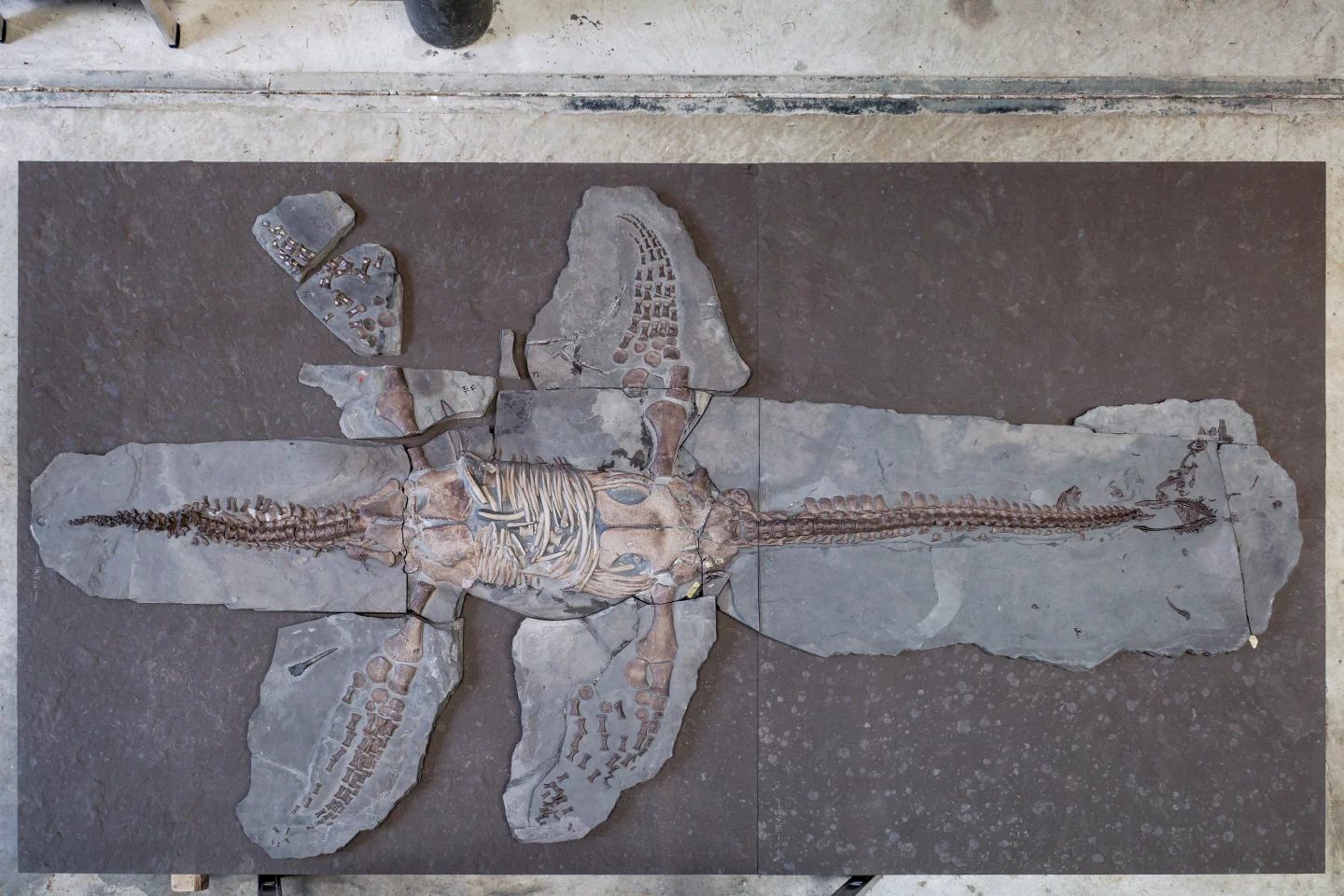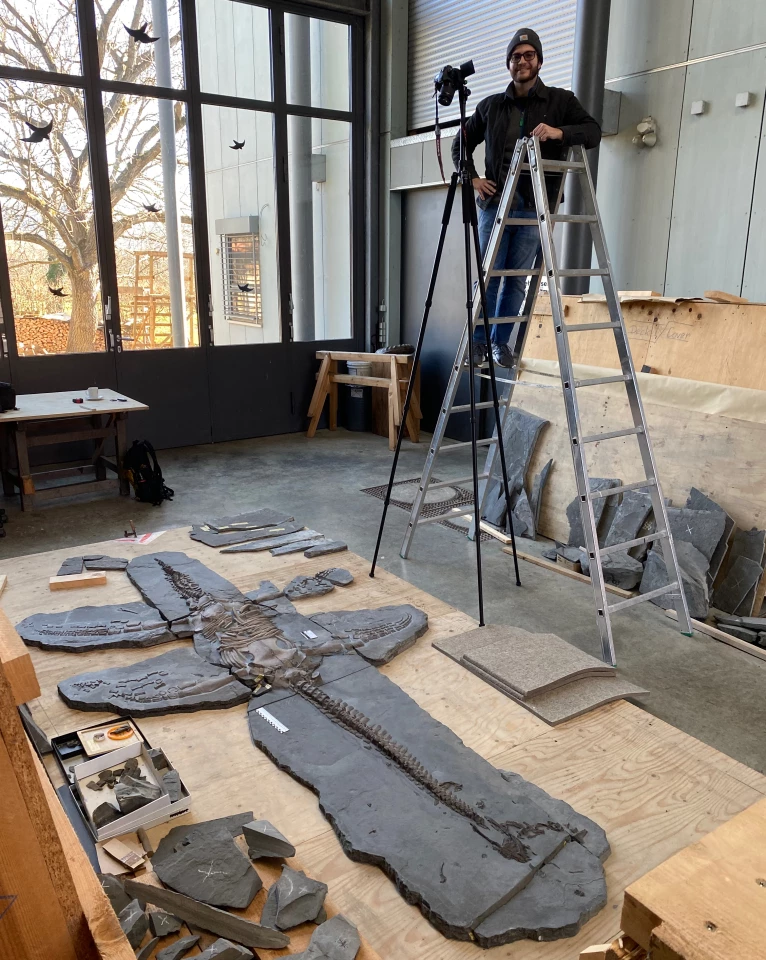You might think that after 200 million years, we would have learned all we're ever going to know about plesiosaurs. Such is not the case, however, as a recent study indicates that the creatures had smooth skin on some parts of their body, and hard scales on others.
Everyone's favorite candidate for the identity of the Loch Ness monster, the plesiosaurs were a group of prehistoric marine reptiles that lived in oceans throughout the world between 203 and 66 million years ago. They had four flippers, a short tail and a long neck, and they reached up to 12 meters (39 ft) in length.
Their fossilized bones and teeth have been found in numerous countries, including a complete 183-million-year-old skeleton which was unearthed in the Posidonia Shale deposit in southern Germany. A 2020 analysis of the remains revealed that bits of the animal's skin had also been fossilized – one piece from the tail, and one from the trailing edge of the right front flipper.

In a more recent study led by Sweden's Lund University, a variety of techniques were utilized to more closely scrutinize the fossilized skin.
It was found that the tail skin was smooth and streamlined, much like the skin of other prehistoric marine reptiles such as the ichthyosaurs. The flipper-edge skin, however, was made up of small triangular structures similar to modern-day reptile scales. These scales may have served either or both of two purposes.

First of all, by keeping the trailing edges of the flippers stiff, they could have boosted hydrodynamic efficiency as the reptiles swam through the water. If those edges had been too soft and flexible, they would have wasted muscle energy as they rippled with each flipper-stroke.
It's additionally possible that the hard scales could have helped the plesiosaurs maintain traction and avoid injury as they "bottom-walked" along the seabed while grazing on bottom-dwelling mollusks. Previous studies of plesiosaurs' fossilized stomach contents have shown that they did indeed feed – at least partially – on such prey.

"Our findings help us create more accurate life reconstructions of plesiosaurs, something that has been extremely difficult since they were first studied over 200 years ago," says PhD student Miguel Marx, lead author of the study. "Also, the well-preserved German fossil really highlights the potential for soft tissue in providing valuable insights into the biology of these long-extinct animals."
A paper on the research – which also involved scientists from Uppsala University, RISE (Research Institutes of Sweden), Naturkunde-Museum Bielefeld, and Urwelt-Museum Hauff – was recently published in the journal Current Biology.
Source: Lund University







